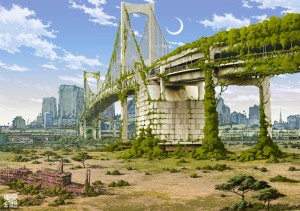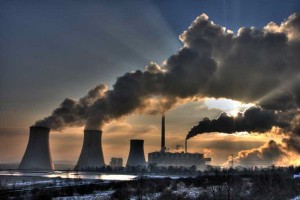I come from Edmonton, Canada. Edmonton is largely an industrial city, and a major economic centre thanks to all the oil and gas reserves that lie north of the city. As such, jobs are plentiful, the cost of living is entirely affordable, and the quality of life is excellent. People from all over Canada move to Edmonton in search of employment, and the city has experienced a steady growth in population ever since its establishment as a city in 1905. Looking at the numbers, things in Edmonton could not possibly be better.
Unfortunately, Edmonton has its fair share of design issues. We have one of the worst cases of sprawl of any North American city, and so most of the city is comprised of thoughtless and dysfunctional suburbia. To get an idea of the enormity of the problem, you could fit 7 Barcelonas into Edmonton without breaking a sweat. That, or 6 Vancouvers, 8 Manhattans, or 7 Parises – that’s pretty darn big. Most of the developments are two-dimensional – single detached housing and low-rise apartments – and take no advantage of all the space the sky has to offer. The idea of the “American Dream” prevails more strongly here than, well, in America, with each family striving to acquire its own facade house in one of Edmonton’s boring cookie cutter neighbourhoods. This not only contributes to the ever-increasing epidemic of placelessness that plagues this city, but also prevents the development of proper, diverse communities. Public spaces are few and far between, failing as active nodes within the city except during larger annual city events and festivals. In fact, one of the most common places for people to meet is at the shopping malls, but since these venues are privately owned, they are designed for profit, not people. Public transportation is yet another embarrassment, since most everyone owns at least one car and relies on it for everything. I love to drive, but my resulting physical condition is absolutely no testament to the convenience and ultimate necessity of owning a vehicle.
I could go on, but the point is clear: my city has issues. Then again, so does every other city. The interesting part comes when one attempts to analyze and understand the reasons why certain things do not work. A lot of Edmonton’s problems stem from one key point: the city is not designed for people. It is designed for industry, and in this way the city becomes a machine for production, and its citizens are the worker ants that keep the machine going. Edmonton’s problems relate to the human dimension, and this is where our definition of economic success fails. To say that Edmonton is economically successful is a truth, but a limited one; it is relevant insofar as oil is relevant, but oil is a resource to be mined, used, and forgotten. When the same attitude is applied to human life, we design cities that are guaranteed to fail.
But why should we care about the liveability of a city? It’s not as though Edmonton is a dysfunctional city. On the contrary, we have many different shops and restaurants; supermarkets the size of an entire Eixample block; gyms and sportsfields where people can play sports and have fun; front yards with perfect green lawns and large backyards for throwing BBQ parties; large comfortable trucks that can drive anywhere and transport anything; etc. It’s a culture, and most people seem to be quite happy with it.
The problem is that this culture is build on abundance, and it is not sustainable in the long run. Canada is easily one of the richest countries in the world, both in terms of resources and land area. We have everything one would need to forge a successful civilization – and we have. I would argue that Canada’s wealth has in fact formed the foundation for our culture and our attitude, which is one of surplus and thoughtlessness. We don’t give a second thought as to the consequences of our actions, and in my mind this is one of the most dangerous enemies of a sustainable economy.
Here’s an example. During my last semester at the University of Alberta, I enrolled in a course titled “Design for Sustainability”. As part of our explorations into the issues of sustainability, my class went on a field trip to the Edmonton Waste Management Centre. It was a huge facility, with areas for sorting through all the different types of garbage and recycling, including electronic waste, which is usually just thrown straight into the landfill. I got to see (and smell) the largest composting plant in North America, which took much of the garbage and processed it into fertile soils which could then be used by farmers. Back in 2013, the EWMC diverted an impressive 60% of residential waste from landfills, but at the time they were constructing a biofuels facility which would be able to divert an additional 30% while also producing useful biofuels and other chemicals. I went home with the proud knowledge that my city was home to North America’s most advanced waste treatment facility. I would later learn that all of this innovation came out of necessity because Edmontonians also produced the most garbage out of any city in North America.
The reality is that most of what humans do is reactionary. This is incredibly ironic when one considers that humans are probably the only species capable of thinking into the future and predicting the probable outcomes and potential consequences of actions in the present. A civilization with an abundance of resources can afford the luxury of not worrying about the future, because they know that resources are plentiful. Clean water will flow from the giant icefields of the north; trees will grow and regenerate in the vast, unending forests; oil from the ground will fill our cars and warm our houses. We grow up with the idea that everything is forever and that for a small price, nature is ours to take and to do with as we please. And then one day, we wake up and realize that the icefields have melted, the forests are gone, and the oil reserves depleted, and we wonder where we went wrong.
Edmonton is a city ripe with thoughtless design. Take the sprawl, for example. For every new neighbourhood that is constructed, one must lay down infrastructure – underground pipes for water and natural gas, power lines for electricity, roads for traffic. One must build houses for the people to live in, and then department stores for the people to fill their houses with stuff. One needs to expand the public transportation system to carry people from their homes to their work or to school, and the waste collection system to get rid of all the stuff people throw away. By now, we have more or less satisfied the requirements for housing the workers of the machine.
But what we have built is not a city so much as it is a large storage unit. A city is not a storage unit – anyone would agree with this statement. So then why would we want a storage unit as our city? The answer, of course, lies in the numbers. Any intern can churn out ten cookie cutter house designs in a BIM program, which provides big savings in terms of designing the residential units. By constructing these out of cheap wood products and plastics instead of high quality or non-toxic bio-based materials, one saves even more money. Everyone is provided with an adequately-sized front- and backyard, and the streets and cul-de-sacs are perfect areas for kids to ride their bikes and play together, so the need to provide properly landscaped parks and public gathering spaces falls away. And since everyone has at least one car parked in their two-car garage, the design and integration of a proper public transport system becomes a project for another day. The mindset is not all that difficult to understand: people operate according to personal gain. For businesses and corporations, this means making as much money as possible. For individuals, this translates to accumulating as much materialistic wealth as possible.
We are blind. We drive looking only at the car in front of us. Sadly, this is not our fault – in fact, none of it is. We are evolutionarily programmed to respond to local events and take to advantage of available resources. Only by looking past the short-term financial gain will we begin to design better cities. Let’s take the example of Edmonton’s public transportation system. Until recently, the only way to get around Edmonton was by bus. For a city of one million, this is simply not acceptable. Not only are the buses unreliable and relatively infrequent, but the more the city grows, the less dense the bus routes become, and so for anyone who lives outside of a certain radius, there is no reliable way of getting from their home to anywhere else in the city. And so in reaction to this public transportation issue, Edmonton was endowed with an LRT (Light Rail Transit) system. The most economically feasible way of constructing this network was on the ground, and so the rails ended up slicing through many a major intersection as they traversed from one end of the city to the other, wreaking havoc upon automobile traffic. Not only this, but the planners drastically underestimated how many people would want to use the new train system, and on opening day the ridership actually outnumbered their greatest estimate. This resulted in the need to extend every single train platform and also to increase the frequency of the trains, which even further congested automobile traffic around the LRT line. Furthermore, there is limited redundancy between the LRT and bus systems, so if the LRT breaks down (which it has more than once), transportation between different parts of the city becomes near impossible.
At the turn of the century, there was a project in the works not far from my neighbourhood called Century Park. It was to be situated next to the new LRT extension, providing easily accessible public transportation for all. The master plan called for low-, mid-, and high-rise buildings, a common park with a lake, sports facilities, unique local shops and all the amenities necessary for a successful community. Designed to accommodate almost 5,000 residents, the first condominiums sold out hours after becoming available. But after only four of the twenty-some building complexes were built, construction stopped. There was not enough money to follow through with what was one of the most well-designed and future-minded master plan developments in Edmonton. To this day, there sits a large, vacant lot, a reminder of Edmonton’s potential.
The economic model has to do with numbers, and this is where it has failed. If something lacks a monetary value, of course it is difficult to evaluate it in terms of its worth in an objective and concrete sense. But this does not mean that one cannot assess the value of something in other terms. In fact, trying to objectively evaluate something that is not objective is dangerous. You can put a price on lumber, but when our carbon sinks disappear and the oxygen runs out due to deforestation, we will pay the real price. The “storage unit” is the extent of Edmonton’s investment for its inhabitants, but it is not sustainable – not just environmentally, but also in human terms. Time is money, but a poor transportation system loses people time. Community is strength, but poorly designed, two-dimensional neighbourhoods with no public spaces limit community development. Happiness and wellbeing are priceless, but when more and more people suffer from depression because their environment is suffocating the very essence of what it means to be human, a city has failed. The economics of sustainability should be about people as much as it is about their environment.




